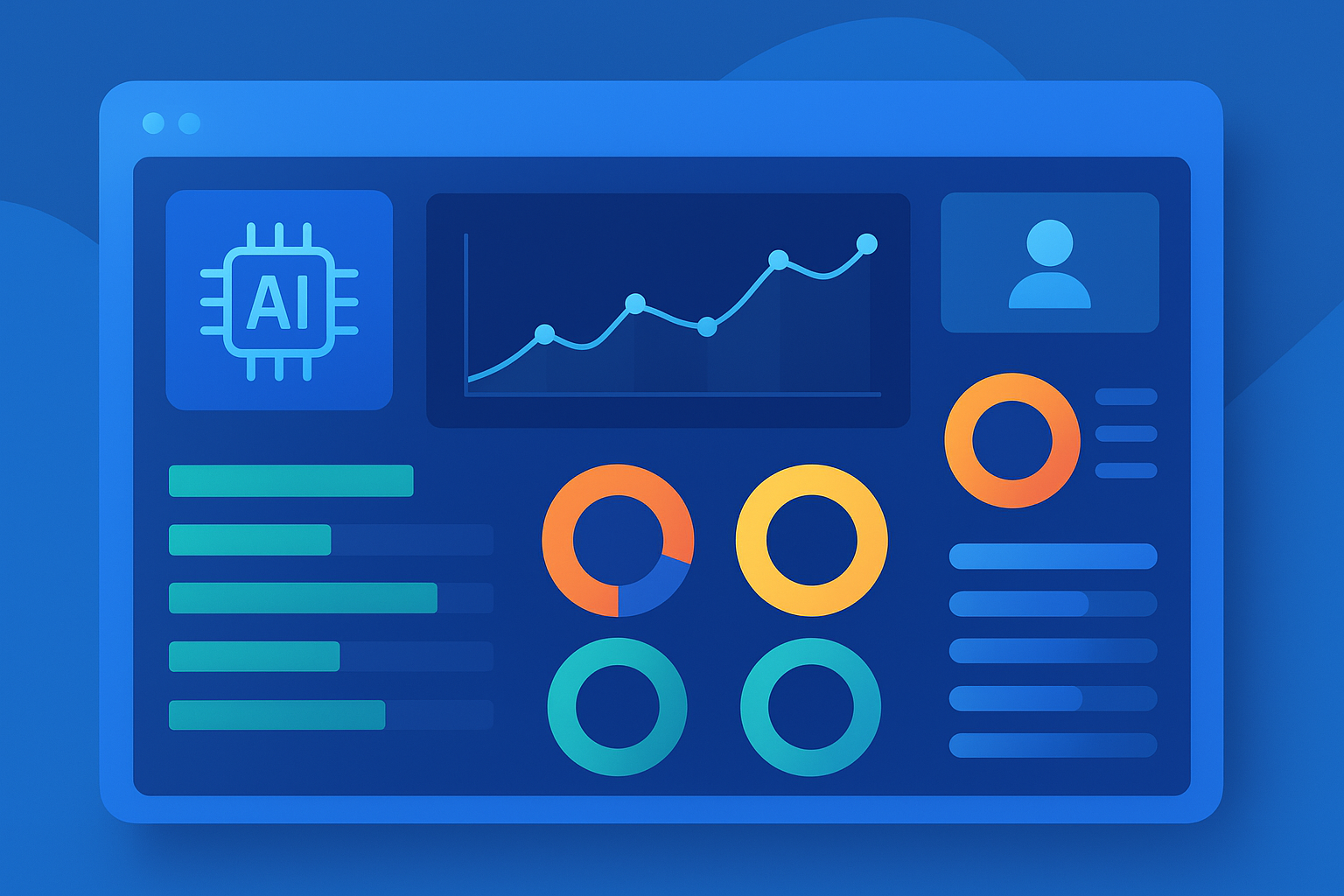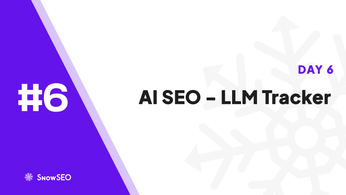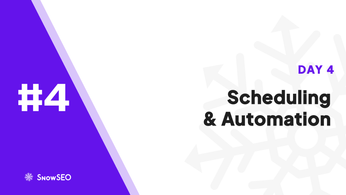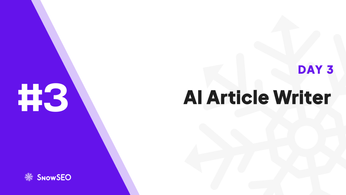
Ultimate Guide to Personalized Content for AI
Table of Contents
Discover how AI is rewriting the rules of customer engagement: platforms now predict intent, tailor messages in real time, and nudge users toward conversion before they even know what they want. Yet harnessing that power isn’t as simple as flipping a switch. Marketing teams drown in data, creative teams juggle endless variants, and everyone worries about sounding robotic or, worse, irrelevant. If that sounds familiar, you’re in the right place. This step-by-step guide breaks down the entire personalization process-from audience segmentation and dynamic content generation to testing frameworks and ethical safeguards. You’ll see concrete examples, learn about cutting-edge tools like Phrasee, Persado, and MonkeyLearn, and follow a workflow refined through hundreds of successful campaigns. Backed by the latest industry research and expert insights, the pages ahead will transform fuzzy AI aspirations into a practical blueprint you can deploy today. Prepare to elevate engagement, loyalty, and revenue in one decisive move.
What is Personalized Content for AI?
Personalized content for AI is any text, audio, or visual asset dynamically tailored by machine-learning models to match an individual user’s intent, context, and history. Instead of blasting one-size-fits-all messages, AI engines analyze data signals in real time and assemble content variations that feel hand-crafted for every reader.
Key components include:
- Behavioral data such as clicks, watch time, and purchase history
- Contextual signals like device, location, and time of day
- Generative models that assemble headlines, product descriptions, or video scripts on the fly
When done well, personalization boosts relevance, reduces cognitive load, and quietly guides users toward the next best action.
| Factor | Traditional Segmentation | AI-Driven Personalization |
|---|---|---|
| Data scope | Static demographics | Real-time, multi-channel |
| Content variations | Limited versions per campaign | Infinite, auto-generated |
| Learning cycle | Manual A/B testing | Continuous self-training |
The Evolution of AI in Content Personalization
- Rule-based Era (2000-2010) – Marketers relied on if-then logic tied to basic CRM fields.
- Predictive Era (2011-2018) – Machine learning models began forecasting user propensity, enabling smarter recommendations.
- Generative Era (2019-present) – Large language models create and optimize content autonomously, with tools like Phrasee, Persado, and MonkeyLearn leading the charge.
In 2025, 75% of companies report higher engagement after adopting AI personalization, proving the shift from manual tweaks to machine-curated experiences is not just hype but a competitive necessity.
Also Read: Hyper-Personalized Content: Ultimate Guide 2025
Benefits of Using AI for Personalized Content
Done right, personalized content feels like a one-to-one conversation, not a broadcast. Artificial intelligence turbo-charges that illusion by crunching millions of data points in milliseconds, spotting patterns no human team could catch, and serving the perfect message at the perfect moment.

Enhanced User Engagement
AI-driven personalization lifts the metrics that matter most: time on page, click-throughs, and repeat visits. When an email subject line is written by Phrasee or Persado, open rates routinely climb above 40%. Streaming platforms use similar algorithms to keep audiences binging episode after episode.
Marketers report a 75% surge in on-site engagement after deploying AI recommendations.
Additional Advantages
- Predictive relevance
- Real-time optimization
- Scalable personalization at zero extra headcount
Manual vs AI Personalization
| Factor | Manual Process | AI-Powered Approach |
|---|---|---|
| Data handled | Thousands of rows at best | Millions of interactions |
| Update frequency | Weekly or monthly edits | Continuous, real-time tweaks |
| Resource cost | Large creative team | Lean team plus subscription |
| Example tools | - | Phrasee, Persado, MonkeyLearn |
Key takeaway: AI lets you move from broad segments to fluid micro-moments, automatically adapting copy, imagery, and timing for every individual. The result is content that feels handcrafted to each visitor yet scales effortlessly across channels.
How to Implement Personalized AI Content Strategies
Personalization is no longer a nice-to-have; it is the heartbeat of modern engagement. Follow this concise, practical roadmap to embed AI content strategies into your marketing machine without drowning in jargon or vendor hype.
1. Identifying Your Audience and Goals
- Audit existing data
- CRM fields, web analytics, and social listening tools reveal what your audience already tells you.
- Segment by intent, not by vanity metrics
- Look for behavioral clusters such as “repeat buyers who read reviews” instead of generic age brackets.
- Map content objectives to business outcomes
- Tie “increase newsletter clicks” directly to “grow qualified pipeline by 15 %.”
- Define success KPIs before selecting technology
- Typical metrics include micro-CTR on in-mail recommendations, average session time, and assisted revenue.
Tip: Keep segments under six personas. Over-segmentation dilutes data, confusing even the smartest algorithm.
2. Choosing the Right AI Tools
| Use Case | Recommended Tool | Strength | Quick Start Checklist |
|---|---|---|---|
| Email subject line optimization | Phrasee | Generates human-like copy that matches brand voice | Upload past 100 top-performing subject lines |
| Dynamic website copy | Persado | Deep language models with real-time testing | Connect CMS API; define conversion event |
| Text classification for blog tagging | MonkeyLearn | Low-code interface, customizable classifiers | Import existing articles; train on 20 samples |
| Sentiment-based push notifications | Custom GPT via cloud provider | Fully tailored to niche lexicon | Fine-tune model on support tickets |
- Run a 14-day sandbox pilot.
- Compare AI copy against control group (A/B or multivariate).
- Approve only if lift exceeds pre-set threshold (e.g., 5 % CTR bump).
Warning: Resist “all-in-one” suites that promise to solve every problem. Specialized tools often outperform bloated platforms.
3. Data Integration and Governance
- Centralize customer data in a secure CDP before piping it into AI tools.
- Enforce role-based access; marketing staff should never see raw PII.
- Schedule quarterly bias audits to ensure outputs don’t skew toward over-represented demographics. According to analysis in the Stanford AI Index, transparent data governance is a top predictor of long-term ROI for personalization projects.
4. Iterative Testing and Optimization
- Launch small: one email flow, one landing page.
- Measure uplift using a holdout cohort.
- Feed performance data back into the model for continual learning.
- Rotate creative angles every 30 days to prevent “banner blindness.”
- Celebrate and scale the winning playbook across channels.
5. Measuring Impact and Scaling
| Metric | Baseline | Target after 90 days | Data Source |
|---|---|---|---|
| Email CTR | 2.8 % | 4.0 % | ESP analytics |
| Product page dwell time | 45 s | 60 s | Web analytics |
| Assisted revenue | $120k | $150k | CRM opportunity reports |
Key Insight: Pew Research shows that 75 % of companies adopting AI-driven content personalization report higher engagement within the first quarter, validating a disciplined, metrics-first rollout approach.
By weaving these steps into your workflow, you transform AI from a buzzword into a predictable growth lever-one data point, one personalized interaction at a time.
Also Read: Personalized Content for SEO: Best Practices 2025
Examples of Successful Personalized AI Content
Personalized AI content shines brightest when it moves real needles - higher conversions, stickier engagement, and happier users. Below are snapshots of brands that turned algorithms into measurable wins.

Case Study: Company X’s Success Story
Company X, a mid-market fashion retailer, layered an NLP engine on top of its email program. The tool scored every subscriber on style affinity, typical spend, and seasonal intent, then generated subject lines with Phrasee and dynamic product grids with Persado.
Key outcomes:
- Open rate jumped from 17% to 38% in eight weeks.
- Average order value rose 22% after deploying personalized look-books.
- Unsubscribes fell 41%, indicating healthier long-term loyalty.
| Metric | Before AI | After AI |
|---|---|---|
| Email Open Rate | 17% | 38% |
| Avg. Order Value | $62 | $76 |
| 90-Day Retention | 44% | 63% |
Tip: Company X started small, testing a single segment first. Rapid wins secured executive buy-in and unlocked budget for site-wide personalization.
Additional Inspiring Examples:
- A news app that curates local push notifications, lifting daily sessions 29%.
- A B2B SaaS firm using MonkeyLearn to tailor knowledge-base articles, reducing support tickets 18%.
- A streaming platform that shuffles hero images based on watch history, boosting click-through 26%.
These victories prove that well-executed, data-driven personalization is not a nice-to-have - it is a direct growth lever.
Future Trends in AI-Driven Content Personalization
Personalization is evolving from “people like you” to “exactly you.” Over the next 24 months, AI engines will no longer rely on broad segments but on dynamic digital twins that update with every click, scroll, and voice command. According to research on personalization and predictive analytics, brands using real-time behavioral models are already doubling click-through rates compared with static persona approaches.
Emerging Technologies
- Zero-latency inference chips
- Edge-optimized silicon shortens model response times from seconds to milliseconds, making hyper-personal push notifications feel telepathic.
- Generative retrieval
- Instead of pulling prewritten snippets, large language models will compose unique micro-copy for each user, merging brand tone with moment-in-time context.
- Emotion recognition layers
- Multimodal AI reads facial micro-expressions or vocal stress to adjust copy intensity, ideal for support chatbots or mental-health apps.
- Privacy-first identity graphs
- Federated learning keeps raw data on-device while sharing only model gradients, satisfying looming global regulations highlighted in NIST’s primer on algorithmic accountability.
Tip: Prepare your martech stack now for consent management APIs; retrofitting later will cost more than early adoption.
| Technology | Immediate Benefit | 2026 Outlook |
|---|---|---|
| Zero-latency chips | 4x faster personalization loops | Commodity in mobile devices |
| Generative retrieval | Infinite headline variations | Voice and AR integration |
| Emotion recognition | Higher session duration | Widespread in wearables |
| Privacy-first graphs | Compliance cost savings | Global interoperability |
Teams that embrace these shifts will own the conversation around the future of AI personalization rather than chase it.
Ready to turn today’s insights into real-world results? SnowSEO’s unified platform removes the guesswork from personalized content by automating everything from keyword discovery to AI-optimized copy, then publishing it straight to your CMS while you sleep. Instead of juggling half-a-dozen tools, you get one intuitive dashboard that tracks how your content performs on Google, ChatGPT, Bing, and even emerging engines, highlighting gaps before competitors seize them. Imagine having a 24-hour SEO expert who monitors brand mentions, refines tone for each micro-audience, and delivers weekly reports you can act on in minutes-that’s SnowSEO in action. Start integrating AI personalization strategies in your content today. Visit https://snowseo.com, create your free workspace, and import one article to see automatic optimization in real time. Within five clicks you’ll uncover new keywords, personalized angles, and a publishing schedule designed to lift engagement by double digits. Make every piece you publish feel tailor-made-and watch organic growth accelerate.
Frequently Asked Questions
Q1: How personalized should my AI-generated content be?
Aim for micro-segments of 500-1,000 users. This keeps messaging relevant without creating data silos, and it prevents over-fitting your models to audiences that are too narrow to scale.
Q2: Do I need a data scientist to start?
Not anymore. No-code tools like Phrasee and Persado let marketers create, test, and optimize content variations through drag-and-drop dashboards while still offering API access for future advanced work.
Q3: How often should I refresh personalization models?
Review performance every quarter and retrain when click-through or conversion rates drop by 10% or more. This cadence balances model freshness with the cost of collecting and labeling new data.
Q4: What KPIs matter beyond click-through rate?
Track downstream metrics such as average order value, lifetime value, and churn. These reveal whether personalized messages drive profitable behavior rather than short-term engagement spikes.
Q5: Is AI personalization compliant with privacy laws?
Yes, as long as you respect consent choices, anonymize data, and provide clear opt-outs. Modern platforms automatically flag sensitive personal data to keep campaigns aligned with GDPR and CCPA guidelines.
Conclusion
AI-driven personalization has moved from experimental add-on to essential growth lever. The big takeaway is simple: algorithms that learn from real-time behavior and first-party data now shape every winning content strategy. Put differently, success hinges on matching each visitor’s intent, context, and preferences at the precise moment of need.
To make that happen, follow three core steps:
- Audit your data foundation to ensure quality inputs.
- Select purpose-built tools such as Phrasee for copy, Persado for emotional tone, and MonkeyLearn for sentiment analysis.
- Launch small, iterate fast, and let machine-learning feedback loops refine every asset.
Looking ahead, expect deeper multimodal personalization, privacy-aware recommender systems, and generative AI that writes, designs, and voices content on the fly.
Start integrating AI personalization strategies in your content today. For continued progress, explore additional resources on emerging AI tools, governance frameworks, and ethical deployment practices to stay ahead of the curve.





